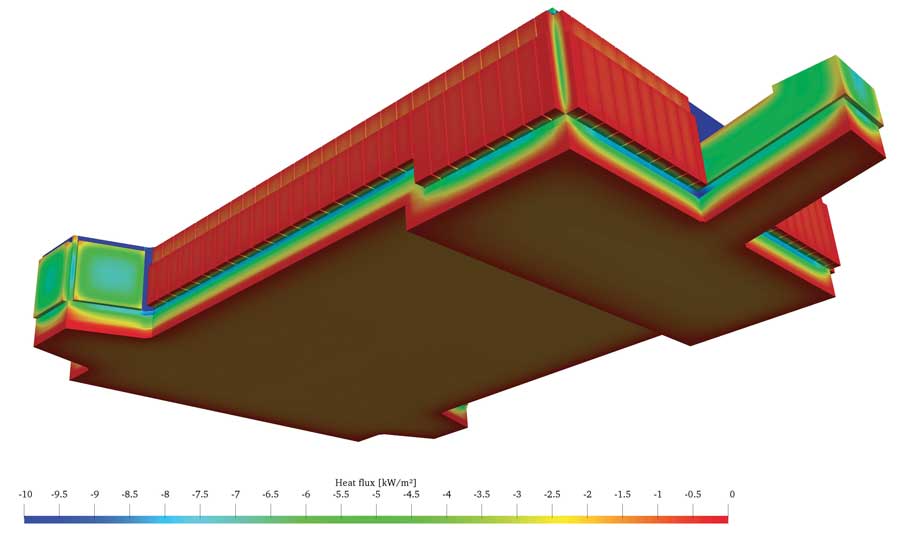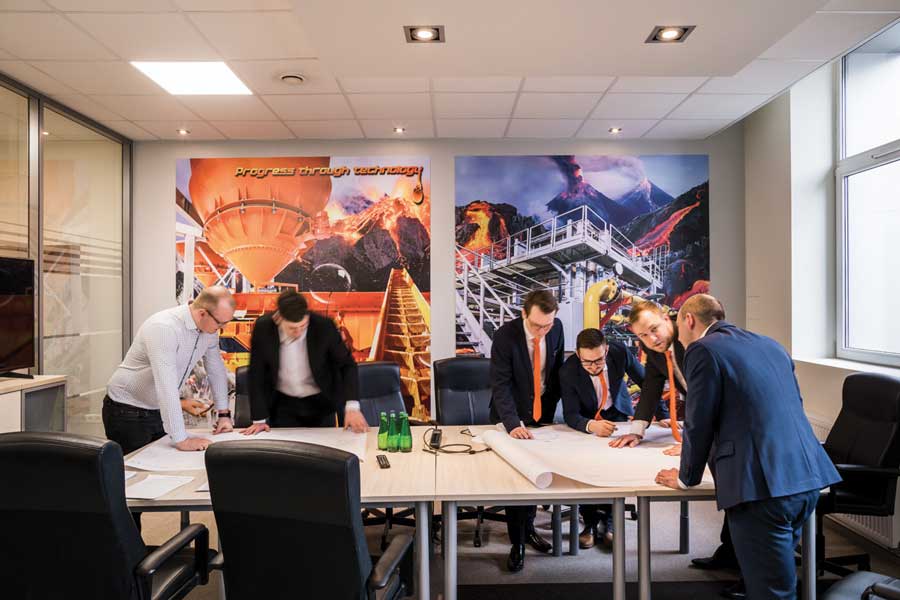Forglass and its bold approach to innovation with regards to automation and integration with Industry 4.0 solutions is continuing to move ahead, this time in furnace design, with improvements based on creativity combined with technical expertise. In this article, in an ‘interview’ format, Piotr Knast, CEO of Forglass, speaks about the company and its innovations.
 |  |
Piotr Knast is the CEO of Forglass, an engineering and technology company from Poland that has earned the trust and respect of some of the largest glass producers in Europe and elsewhere. The company’s bold approach to innovation is well known in the area of automation and integration with Industry 4.0 solutions. Today, Forglass is taking another brave leap forward with a fundamental improvement in furnace design.

What is the path that has led Forglass to create so many innovations, including this revolutionary furnace design?
Piotr Knast, CEO of Forglass: We’ve been an innovative company from the very beginning. We’ve been designing and erecting furnaces and batch plants, which are the most advanced and efficient that money can buy.
Having come from diverse areas of glass production, Forglass owners have experienced the multitude of challenges faced by glass producers first-hand, and were determined to solve them. In recent years, the advent of mathematical modelling has enabled to test a number of innovations in furnace design. What’s important for glass producers is that Forglass is not only a technology developer, but also a company with extensive practical experience of erecting, maintaining and repairing glass furnaces.
We know furnaces and batch plants inside out. We know what works and what doesn’t, not only thanks to computer modelling, but also because we have experienced all the problems that glass producers face every day and we’ve been constantly working on innovations to prevent these problems from occurring.



What is the essence of the inspiration from Pixar’s philosophy for Forglass?
Knast: I have personally been an admirer of Ed Catmull, whose philosophy of developing and growing Pixar and Disney Animation companies was largely based on embracing creativity as the engine of innovation and seamlessly combining it with technical expertise. In an industry as conservative as ours, inventions take a longer time to prove and test, and we’ve been working on some of them for many years, blending the line between the technical and the creative. As a result, we now have a solid pipeline of solutions in the final stages of testing that we will be releasing to the industry over the coming months and years.
I know that details of your company’s revolutionary furnace design haven’t been made public yet. What can you tell us about it at the moment?
Knast: I can give you the main benefits of our new furnace: flexibility of production, up to 15 per cent energy savings plus CO2 and NOX reduction. It can be easily erected in typical plants, without modification of production halls and other structures. What’s more, our solutions go much further than reducing energy consumption and emissions. In fact, they allow glass producers to take a different, more flexible approach with regards to sales and production planning.

That sounds incredibly exciting and we can’t wait to see the complete design, once it is unveiled. Can you tell us anything about the testing process?
Knast: Well, in the case of the furnace design we’re talking about now, last year we partnered with the Dutch company CelSian Glass & Solar BV to provide their GTM-x software for computer modelling studies. Four virtual production lines with our bold designs have been working continuously for a year now and the results have been impressive, to say the least.
We are also testing certain elements in an actual working experimental furnace and we’ve begun conversations with potential investors.
What can you tell us about other innovations from Forglass?
Knast: Well, I can give you two examples that have been recently introduced: one is an ‘intelligent’ scraping conveyor, aptly named SmartScraper™. Equipped with innovative Overload Protection System (OPS), the design uses electronic sensors to continually monitor the working conditions of the conveyor, diagnose problems and react instantly to changes in operation. The machine’s built-in intelligence allows it to slow down or stop before its elements are damaged, including the protection system itself. Additionally, when connected to a comprehensive array of sensors like temperature, working speed or efficiency, SmartScraper™ allows detailed analysis of its performance to avoid future malfunctions. And that’s smart.
The second example of our innovation is a low-dust crusher, which is an integral part of the newest technology in PCR cullet management – the Forglass PCR Cullet System, offering active management of impurities (both magnetic and non-magnetic), recovery of contaminated cullet and high separation efficiency. The end results are improved glass quality and reduced cost.


You’ve also mentioned that Forglass aims to revolutionise the industry’s business rules by sharing its inventions. What do you mean by that and what has led you to this decision?
Knast: Forglass was created as a result of merging five companies with diverse expertise in the glass industry, and the company’s five owners, including myself, have equal shares of the business and equal input. It is this synergistic relationship between us that has made our phenomenal growth possible. Now, we see that supporting other companies and finding synergies is the only long-term strategy that can truly work now and in the future. So, rather than fighting with other furnace suppliers over market share, we intend to support them with this new technology, especially outside of Europe. If you can break through the mental barrier of scarcity, you have a chance to really grow, to sail your ship in the ‘blue ocean’ of abundance. I think that in the long-term, this strategy will bring better results for everybody.
That’s a very courageous attitude. Has “The Blue Ocean Strategy” inspired you elsewhere?
Knast: A great example of how this can be applied in other organisations is LifePlan – a developmental program for teenagers created by the well-known Polish polar explorer and traveller Marek Kami´nski, and supported by his Foundation and partner organizations like Forglass. As one of LifePlan’s advisers, I saw that its original business model limited the reach potential and was not resilient to crises like a pandemic. I encouraged them to change the formula from only enrolling teenagers to actually sharing and teaching the program to other organisations worldwide. Thanks to this change, LifePlan will raise its present capacity of less than 100 kids per year to hundreds and later thousands worldwide.
Our conversation concluded with these words:
Knast: Working together, we can change the world of glass production forever. We can give our clients the tools to face the challenges of the next decade. We can radically reduce CO2 and NOX emissions, reduce energy consumption and literally change the future of furnace design, not unlike Sir Alastair Pilkington’s invention of float glass. Join us, as we jump to the new reality of business!
![]()
Forglass
www.forglass.eu




